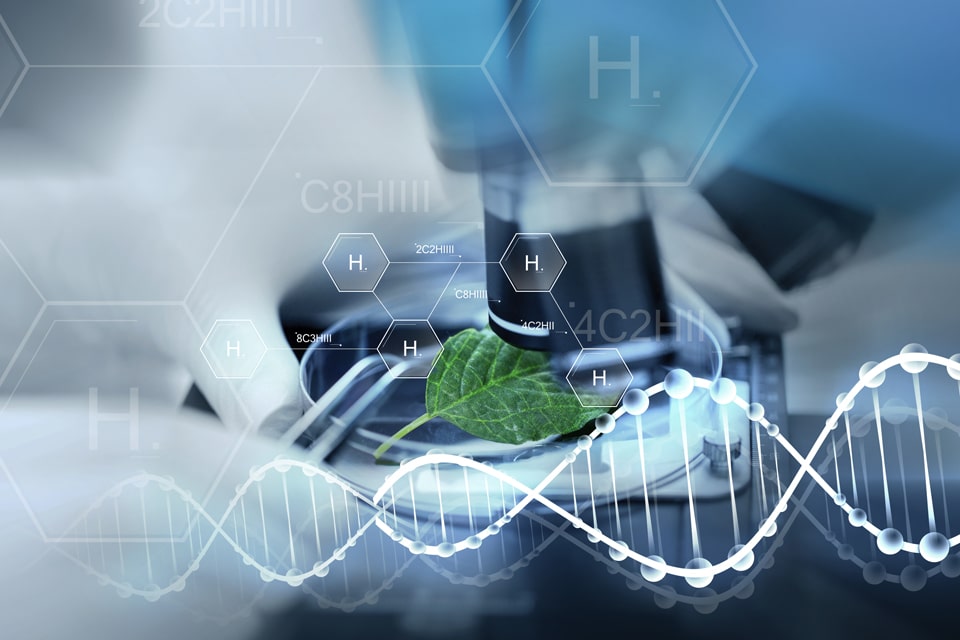Biotechnology has been called the heart of a ‘bio-based economy’, what do we understand by it? What are the reasons for Biotechnology being strongly linked with the development of life sciences research and new growth cycle using bio-based industries? Have the new age CEOs attempted to contribute to the Biotechnology sector started thinking on this?
The major reason for the present concern includes innovations through biotechnology for offering solutions to current challenges that the world faces, from feeding and fuelling a growing population, addressing a worldwide epidemic of chronic diseases etc. We must not forget that developing a sustainable bio-based economy that uses eco-efficient bioprocesses and renewable bioresources is one of the key strategic challenges for the 21st century. Furthermore, biotechnology for inclusive and sustainable industrial development can contribute to our responsibilities towards the achievements of the Sustainable Development Goals (SDGs). Industry leaders, entrepreneurs and their start-ups must watch this growing industry closely.
The bioeconomy could be a source of growth and jobs, creating new business and innovation opportunities in various life science sectors and industries. However, setting up a bioeconomy would require significant investments for transforming production processes and products. The most valuable resource in any industry including biotech-is “talent,” and employers have long identified a skills and knowledge gap in the bioeconomy. Enterprises are engaged in pulling the best ideas, resources and talent to upscale their respective business. To stay competitive entrepreneurs, need to master the challenges of recent advances of science, technology and skills. How to manage the context is the next one! Context hereby meaning, nation’s policy, business environment, funding and skilled manpower. The overall challenge is in managing resources and capabilities. Thus, these new age entrepreneurs must enhance their skills, stay updated, network and have courage to tackle the challenges towards their endeavours. The industry has much to offer in times to come, with health being a primary concern by all and encashed by hungry CEOs in this field!
We need to think!
- What could be the nuances and critical factors pertaining to industrial biotechnology and its contribution to bioeconomy at national and global level?
- Are entrepreneurs ready to identify opportunities, garner resources and initiate their endeavours towards bioindustries?
The authors conducted a brainstorming session with CEOs and posited them with pertinent questions.
Key questions explored
- To what extent industrial biotechnology contributes to bioeconomy at national and international level and how?
- What are the means to identify skills and knowledge gap in the bioeconomy?
- What initiatives are required to facilitate connections between graduates and bioindustries.
- How to combat the major challenges towards entrepreneurial journey targeting bio-industrial sector?
The general understanding has been that this new order Bioeconomy is bridging between biotechnology and the economy as well as between science, industry and society. But there are major challenges around industrial Biotechnology. In many cases the preclinical and clinical trials accept a lot of time and resources with respect to drug development, which has demotivated the scientists and academicians in accepting projects in this direction. There is a visible challenge posited on the ecosystem, which is still nascent in this direction. Entrepreneurship needs to be promoted with an aim at mentoring the youth for entering a global network.
For accelerating the development processes affecting bioeconomy, industries need to adapt newer technologies and innovations along with their openness to encourage research and development. Similarly, the role of government and regulatory bodies in promoting is required.
Discussions
The size and structure of bioeconomy has evolved with over 600 core biotech companies, 500 biotech products, 100 biotech incubators and 200 biotech teaching and research institute in India coming up. A large pool is available in India, which may enhance faster growth. There was a 25% growth in bio industrial sector and is catching up. Nation’s vision and goal for 2025 is to achieve 100-billion-dollar bioeconomy. A similar wave must be witnessed in other geographies.
A total bioeconomy of 62.50 billion USD was achieved as compared to 51 billion-dollar in 2018 including segments like Bio Agri, Bio – Industrial, Bio Pharma and Bio CRO in India. With generous size and structure of biotech-based economy and with the use of advanced techniques, India can achieve the goals of sustainable development. A target 20% blending of ethanol in petrol by 2030 is possible by 2G technology. Similarly, sugar bio refinery with industrial biotechnological inputs can lead to large scale production of important industrial products.
At the same time, it is pertinent in achieving a clean, safe and healthy environment through industrialization of biology. There is also a large opportunity to gain experience enzyme market, which is 6-7-billion-dollar industry. There is a dire need to have bio incubators. With this the industry must be geared to focus on creating new products and modern technologies. There is a clear need to assess the importance of sustainability of this sector. Are CEOs awake and ready to build upon this sunrise sector?
Written by Dr. Manoj Joshi.
Have you read?
Highest-paid CEOs among Russell 3000 companies, 2023.
These Are the highest-paid CEOs among S&P 500 companies, 2023.
Ranked: The 50 Richest Celebrity Couples in the World, 2023.
The world’s wealthiest 300 cities, 2023.
Global Happiness Index: Happiest Countries In The World In 2023.
Add CEOWORLD magazine to your Google News feed.
Follow CEOWORLD magazine headlines on: Google News, LinkedIn, Twitter, and Facebook.
Thank you for supporting our journalism. Subscribe here.
For media queries, please contact: info@ceoworld.biz























































![Social Media Spring Cleaning [Infographic] Social Media Spring Cleaning [Infographic]](https://imgproxy.divecdn.com/9e7sW3TubFHM00yvXe5zvvbhAVriJiGqS8xmVFLPC6s/g:ce/rs:fit:770:435/Z3M6Ly9kaXZlc2l0ZS1zdG9yYWdlL2RpdmVpbWFnZS9zb2NpYWxfc3ByaW5nX2NsZWFuaW5nMi5wbmc=.webp)
![5 Ways to Improve Your LinkedIn Marketing Efforts in 2025 [Infographic] 5 Ways to Improve Your LinkedIn Marketing Efforts in 2025 [Infographic]](https://imgproxy.divecdn.com/Hv-m77iIkXSAtB3IEwA3XAuouMwkZApIeDGDnLy5Yhs/g:ce/rs:fit:770:435/Z3M6Ly9kaXZlc2l0ZS1zdG9yYWdlL2RpdmVpbWFnZS9saW5rZWRpbl9zdHJhdGVneV9pbmZvMi5wbmc=.webp)















